Preclinical research
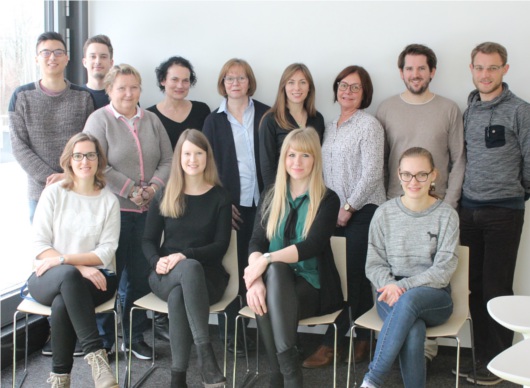
The international, interdisciplinary team of preclinical research involves technical assistants, nuclear physicians, veterinarians, physicists, radiochemists and radiopharmacists.
High-resolution PET / CT technology for small animals is available in our preclinical imaging laboratory, using the same PET substances used in the patient in the experiment. In the mouse or rat model, diseases can be studied and in particular, therapy effects over time can be determined quantitatively. Biologically relevant parameters such as metabolic or transport rates or receptor binding affinities are reclaimed from the in vivo imaging data using modern kinetic modeling and machine learning techniques.
The validation of animal models using PET is of particular relevance since it is possible to compare the function of humans and animals with the same radiopharmaceutical.
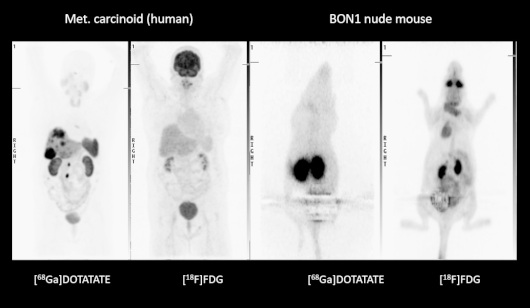
Comparison between animal model and patient - neuroendocrine Tumor
In the patient, the PET image typically shows high somatostatin receptor binding ([68Ga] DOTATATE) in the tumor (here liver metastases) and normal glucose metabolism ([18F] FDG). Transplanted human tumor cells in the neck of the mouse, however, have altered properties (low somatostatin receptor density and high glucose metabolism).
- this animal model is not suitable for the study of endocrine tumors because it does not reflect the human situation.
The focus of preclinical nuclear medicine and its cooperation projects is on in the following studies:
- Alzheimer's and dementia diseases
- Dizziness and balance disorders
- Epilepsy
- Cardiovascular diseases
- Long-term damage of ionizing radiation
- Muscular Dystrophy
- Xenotransplantation
- nanoparticles
- Tumor Research
Since imaging in the same animal can be repeated several times, it is possible to measure the time course of the signal over a longer period (months) and after interventions in the animal model. These serial measurements provide more stable data than group comparisons, as shown in this example:
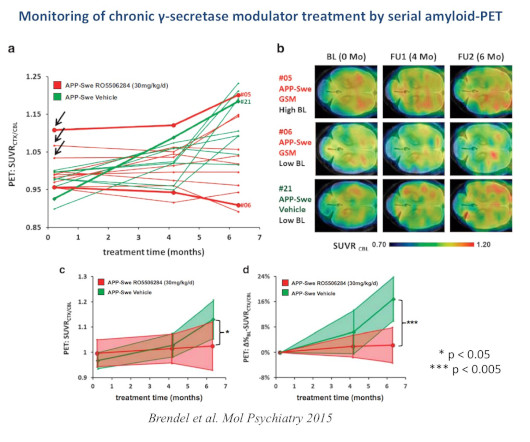
Assignment of PET data to the anatomy is done via registered CT images:
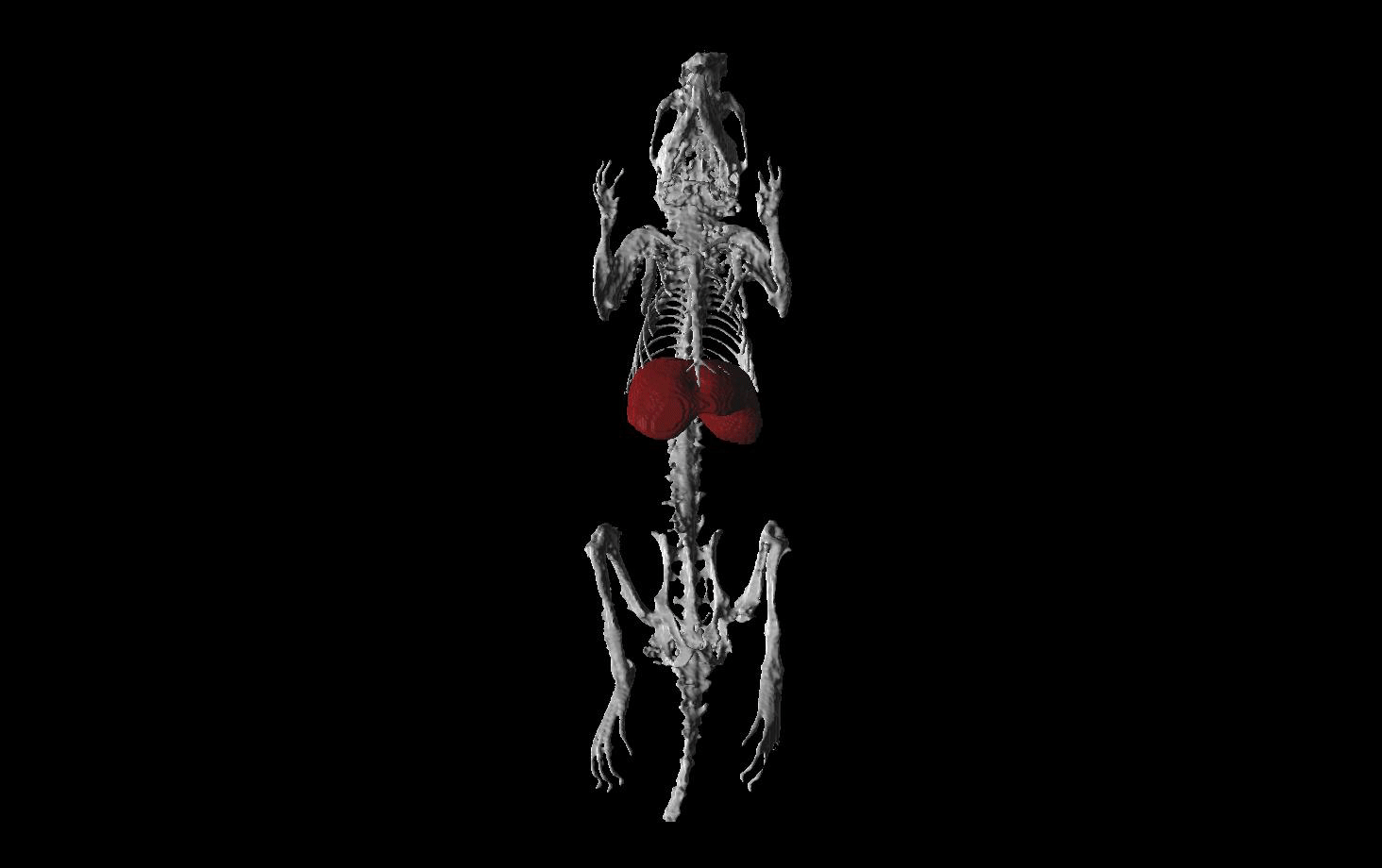 |
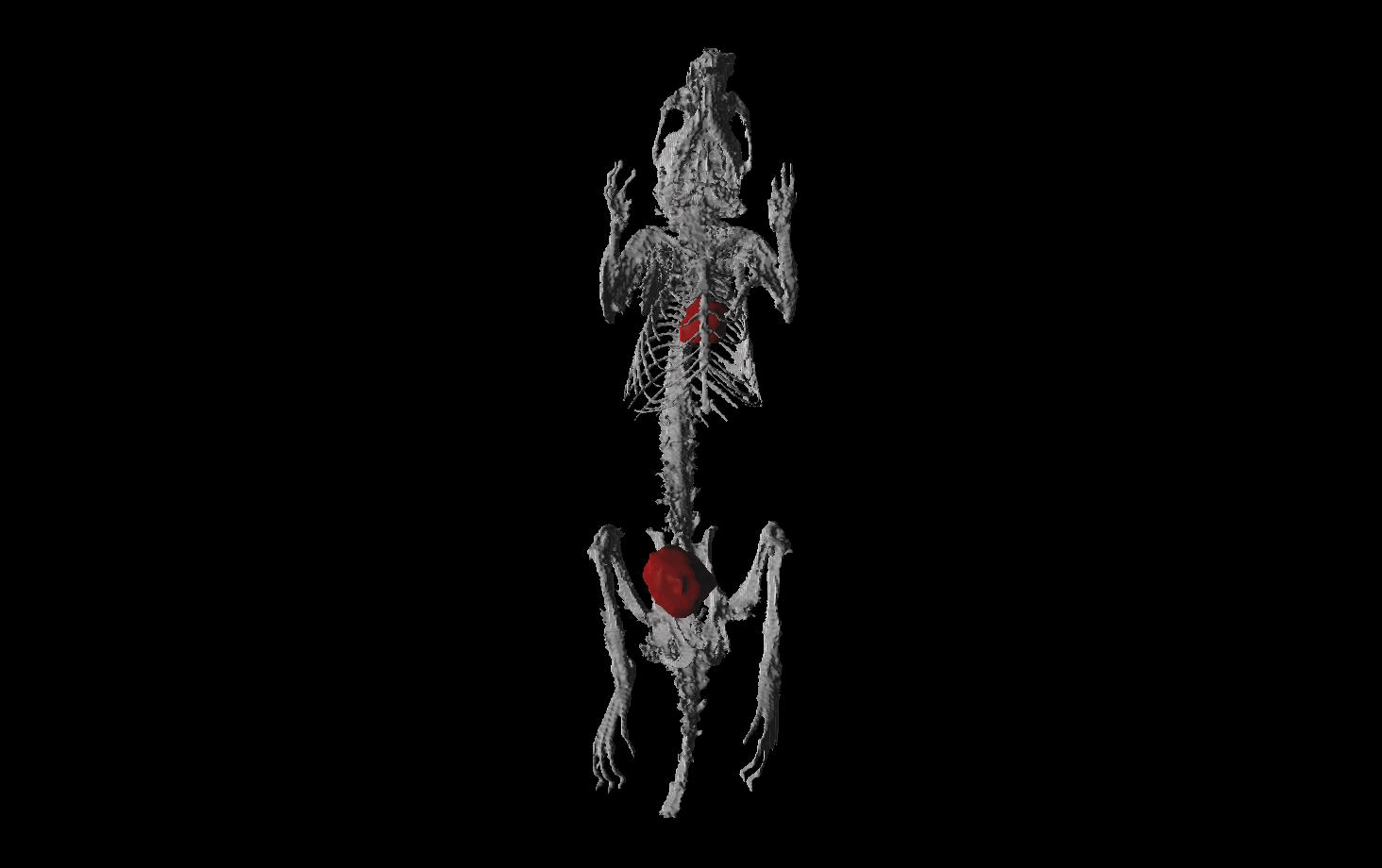 |
| 68Ga positron emission tomography with coregistered computed tomography in the mouse; | |
| Biodistribution of nanoparticles with 68Ga labeling: accumulation in the liver (shown in red). | Biodistribution of free 68Ga: accumulation in the heart and bladder (shown in red). |

[18F]FDG- PET Imaging in pig
+
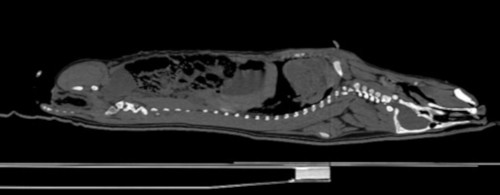 CT scan in pig
CT scan in pig
=

The combined PET/CT allows fusion of PET and CT without changing the positional position. Consequently, an accurate statement about the metabolism in vivo (PET) and morphology (CT) can be made. Shown is a significant Radiotracer accumulation in the salivary glands, as well as brain, hern, kidneys and bladder. The activation in the expansion joints is based on the juvelinen age of the pig.
By combining the clinical symptoms, behavioral analysis (Open Field, Elevated Plus Maze, T-Maze, Morris Water Maze, CatWalk) and imaging techniques (positron emission tomography, magnetic resonance imaging, computed tomography) detailed, holistic knowledge can be obtained and put in relation. These methodologies allow a combination of goal-oriented, longitudinal studies with simultaneous reduction of animal numbers.
BILD8
Video recording Locomotion of a rat in the CatWalk. Through this behavioral analysis, for example informations about the movement, the gait pattern and the speed, could be generated.
Preclinical science in nuclear medicine has the task of developing future-oriented examination and treatment procedures in addition to basic scientific questions. Our research is carried out according to strict ethical principles and international standards, taking into account radiation protection. We expressly pay attention to compliance with the german animal protection law and active animal welfare within the meaning of the 3R (Replace, Reduce, Refine) in order to be able to conduct responsible and innovative science. In particular, we offer our employees continuous participation in internal and external training. Through continuous quality management and improvements, we are constantly striving to increase the efficiency of our projects.
